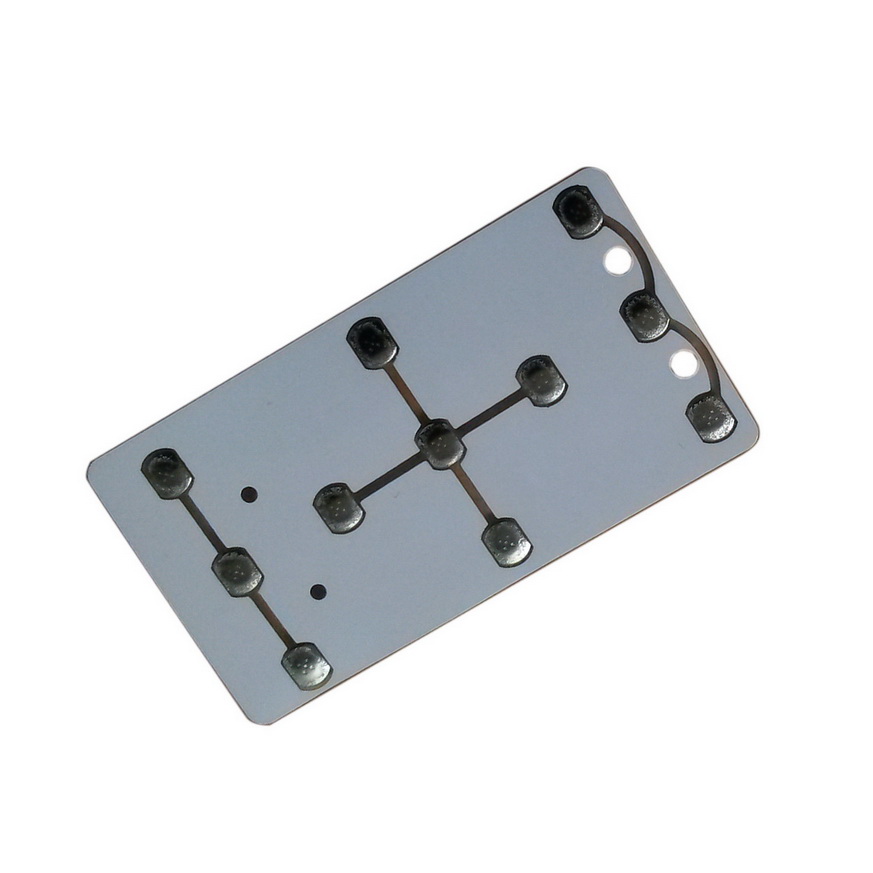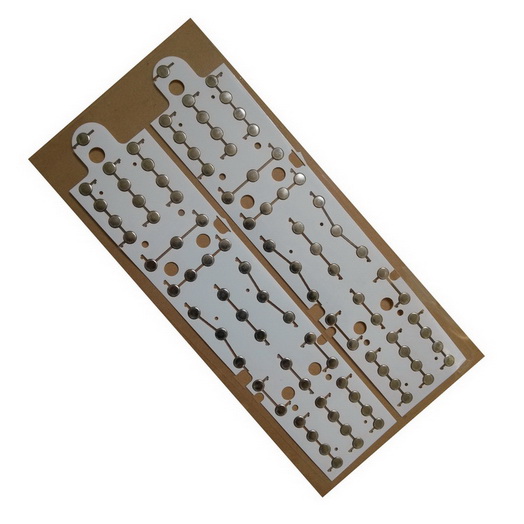Komtac|Dongcheng
Dongze|Huaisong
_pld5.jpg)
_pld5.jpg)


Brand supplier provide good
quality dome array for remote controller or Keypad Keyboard
Including LGF film with meta dome sheet ,Meta dome sheet, Poly dome sheet
|
|
Dome Array Spec |
|
Dome array Material |
SUS302, SUS301 ,304,Rubber ,Mylar ,spacer pet,PE,glue,LGF film,EMI film.. |
|
Process |
Metal Stamping,lamination the Dome snap with PET/PE by glue |
|
shape |
Metal Dome have Round,Rectangular,Cross shape then constitute Array / matrix and finally diffirent shape |
|
Application |
Digital Products,industry control keypad panel, TV / home appliance remote controll ,Security systems etc |
|
Structure |
1-5 or more Point Contact for Metal dome, Dome array have 3-6 layer Structure |
|
Specification |
Dome size :4mm, 6mm, 8mm, 10mm, 12mm,16mm,Dome array size and shape as customer required |
|
Dimple |
1 to 5 as Per Request |
|
Certificate |
ISO9001:2015,ROHS,SGS,RECH |
|
Packaging |
PE bag +carton, or according to customer request |
|
Sample time |
Free sample existing in stock;6-18days for open mould |
|
Maker |
Dongguan Dongcheng Electronic Co., Ltd |
|
Supply Ability |
30,000,000 Piece/Pieces per Month |

_pld5.jpg)
_17d5.jpg)
_f53l.jpg)
_g3yk.jpg)
_htn5.jpg)
_7db4.jpg)
The intrduction of Dome Arrays in Remote Controls: Design, Function, and Future Prospects
Introduction
Remote controls are ubiquitous in modern households, serving as essential tools for operating a wide range of electronic devices such as televisions, air conditioners, audio systems, and more. A critical component of remote controls that ensures their effective operation is the dome array. This article explores the design, function, and future prospects of dome arrays in remote controls.
What is a Dome Array?
A dome array is a set of tactile switches typically found beneath the buttons of a remote control. These switches, known as domes, are responsible for creating the tactile feedback and electrical connection necessary for the remote to register a button press. Dome arrays are crucial for ensuring the reliability, durability, and responsiveness of remote controls.
Design and Construction
1. Materials:
- Metal Domes: Most dome arrays use metal domes made from stainless steel or other conductive metals. These domes are chosen for their durability, conductivity, and ability to provide consistent tactile feedback.
- Plastic Domes: In some cases, plastic domes with conductive coatings are used, offering flexibility and cost-effectiveness.
- Dome Sheet: The domes are often mounted on a flexible plastic sheet or membrane, which is then placed over the circuit board of the remote control.
2. Structure:
- Dome Shape: The dome itself is usually dome-shaped (hence the name), which allows it to flex when pressed and return to its original shape afterward. This shape is crucial for providing the 'click' sensation that users feel when they press a button.
- Contact Points: Underneath each dome, there are contact points on the circuit board. When a dome is pressed, it bridges these contact points, completing the circuit and registering the button press.
3. Assembly:
- Placement: The dome sheet is carefully aligned with the buttons on the remote’s casing. Each button corresponds to a dome beneath it, ensuring that pressing a button directly affects the appropriate dome.
- Adhesion: The dome sheet is often adhered to the circuit board using an adhesive backing, ensuring stability and precise alignment.
Functionality and Benefits
1. Tactile Feedback:
- User Experience: The primary function of the dome array is to provide tactile feedback, giving users a physical sensation of pressing a button. This feedback is crucial for user satisfaction and reducing errors in operation.
- Durability: Metal domes, in particular, are designed to withstand millions of presses, ensuring the longevity of the remote control.
2. Electrical Contact:
- Signal Transmission: When a dome is pressed, it makes contact with the underlying circuit board, closing the circuit and sending a signal to the device being controlled. This immediate response is essential for the remote’s effectiveness.
- Precision: Dome arrays ensure precise and reliable operation, reducing the likelihood of missed or unintended button presses.
3. Design Flexibility:
- Customization: Dome arrays can be customized to fit various remote control designs, accommodating different button layouts and sizes. This flexibility is beneficial for manufacturers designing unique remote controls for different devices.
Future Prospects and Innovations
1. Advanced Materials:
- Nanomaterials: Research into nanomaterials and advanced composites may lead to dome arrays that offer even greater durability, conductivity, and tactile feedback.
- Eco-Friendly Options: As sustainability becomes a priority, manufacturers may explore biodegradable or recyclable materials for dome arrays.
2. Enhanced User Experience:
- Haptic Feedback: Future dome arrays could incorporate advanced haptic feedback technologies, providing more nuanced and customizable tactile sensations.
- Integration with Smart Devices: Dome arrays may evolve to support more complex interactions, integrating seamlessly with smart home systems and providing feedback for various types of inputs beyond simple button presses.
3. Miniaturization:
- Smaller Devices: As electronic devices continue to shrink, dome arrays will need to be miniaturized while maintaining their effectiveness. This will require innovations in both materials and manufacturing processes.
4. Wireless and Touchless Controls:
- Emerging Technologies: With the rise of wireless and touchless control technologies, dome arrays might evolve to support hybrid systems that combine traditional tactile feedback with modern gesture or voice controls.
Conclusion
Dome arrays are a vital component of remote controls, ensuring reliable operation and enhancing the user experience through tactile feedback. Their design and functionality have evolved significantly over the years, and future innovations promise even greater advancements. As technology continues to advance, dome arrays will remain a cornerstone of remote control design, adapting to new trends and user needs in the ever-changing landscape of consumer electronics.


Address:3FL,Blck A#,Huimei Industry Park,Luwu, Zengbu, Chashan, Dongguan, Guangdong, China
Post Code:523383
E-mail: gary@dongchengep.com
Tel:+86-769-81800502
Mobile:+86-13712658816
Mr Gary shaw
_5m6i.jpg)


































































































